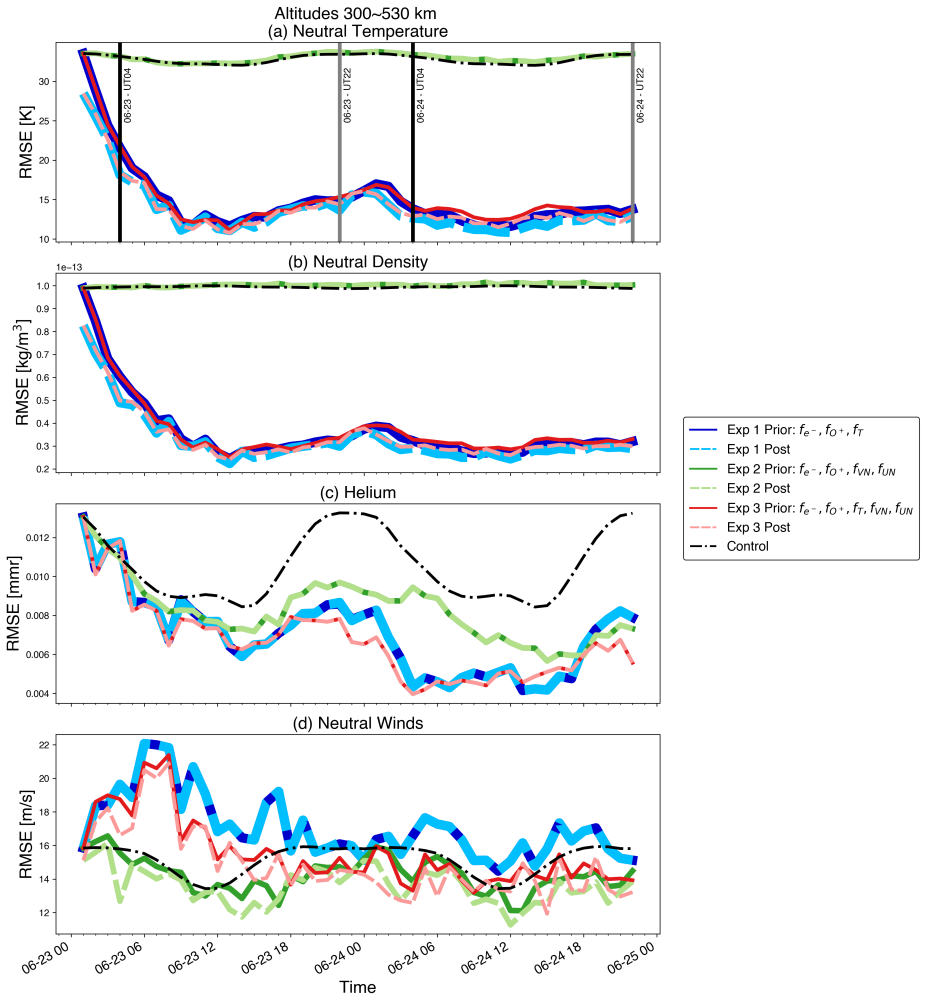
Global RMSE between truth and experiment results for the top third pressure levels for experiments 1-3. Shown for neutral states for (a) neutral temperature, (b) neutral density, (c) helium and (d) the neutral wind magnitude. Experiment posterior errors against truth shown in solid darker colors, experiment prior errors shown in dashed lighter colors. Improvements are assessed in RMSE reduction over the control (black lines). Pressure levels correspond to altitudes 300-530 km.
Space Weather—Nicholas Dietrich, Tomoko Matsuo, Chih-Ting Hsu
As more satellites are launched into Earth's orbit, the environment will become more crowded and increase the chance of satellite collisions. The orbit environment changes with changing solar conditions, affecting the atmospheric drag force and our ability to precisely predict satellite positions. One challenge is that empirical models perform poorly during very active solar conditions. Additionally, advancing our knowledge of the orbit environment is restricted due to our limited number of direct neutral observations. In this study, we look to overcome these limited neutral observations by using an alternative source in plasma observations. We use this plasma data to infer information on neutral states using data assimilation, where we update atmospheric states in a physics-based model using statistics. We find improved neutral density estimates that in turn improve orbit positional errors. Also, we, for the first time, successfully estimate helium compositions with plasma observations, where helium has virtually no observations and becomes dominant at high altitudes. This study further develops the potential use of a large and growing source of plasma data to predict the Earth orbital environment. We look to overcome areas where current observations have fallen short, and help to ensure a safer, collision-free space environment.